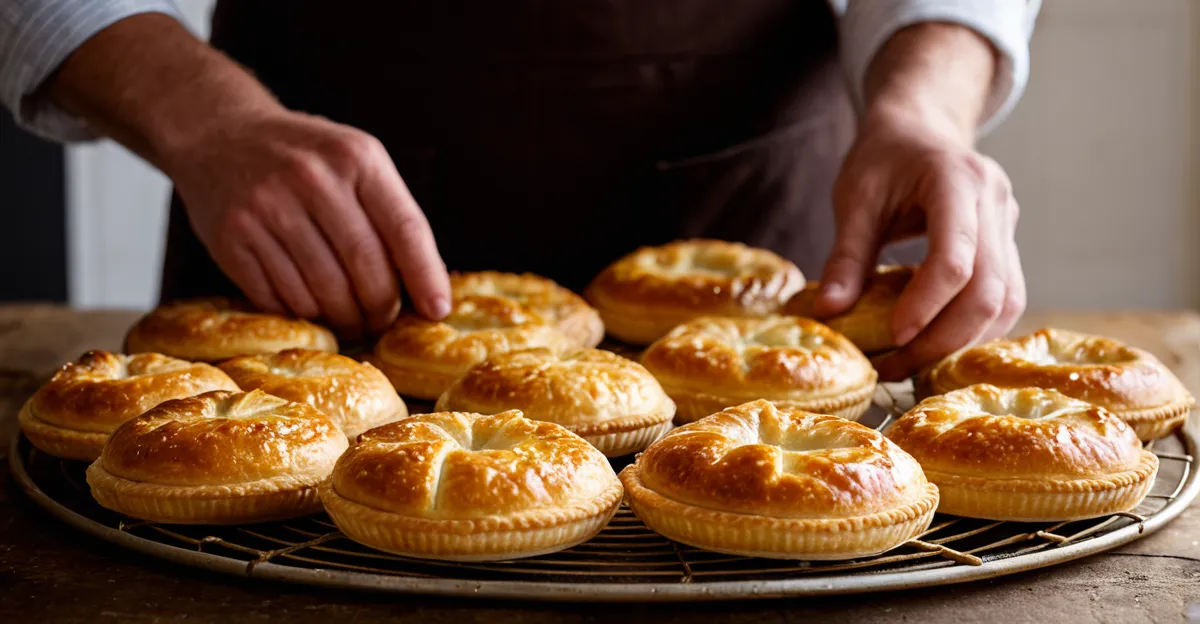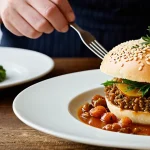Ingredients and Traditional Fillings for a Cornish Pasty
Choosing the right Cornish pasty ingredients is essential to crafting an authentic and flavorful pasty. The foundation lies in sourcing quality components that reflect the traditional recipe. Firstly, the pastry itself requires basic ingredients: strong white flour, butter or lard, a pinch of salt, and cold water. This combination yields the classic shortcrust texture, which is both sturdy and tender enough to hold the filling securely.
When it comes to the traditional Cornish pasty filling, authenticity is key. The classic filling includes diced or minced beef skirt, which offers a rich and distinctive flavor. This is complemented by coarsely chopped potato, swede (rutabaga), and onion. Each vegetable adds texture and sweetness that balance the hearty beef. Importantly, all filling ingredients are roughly chopped and uncooked before baking; they cook fully inside the pasty, retaining moisture and flavors.
Also read : How Can British Cooking Techniques Be Adapted for Vegan Recipes?
Selecting authentic ingredients means opting for fresh, locally sourced potatoes and swede, and high-quality beef, preferably skirt steak for its flavor and texture. The onions should be firm and sweet but not overpowering. Using these Cornish pasty ingredients ensures the final product is true to its heritage and taste. This attention to detail in ingredient choice is the cornerstone of any authentic Cornish pasty recipe.
Step-by-Step Preparation of the Cornish Pasty Pastry
Making a prefect Cornish pasty pastry relies on a few crucial steps to achieve the traditional shortcrust texture. Start by mixing strong white flour with cold butter or lard, then add a pinch of salt for balance. The key here is to keep the butter cold and work quickly, rubbing it into the flour until the mixture resembles fine breadcrumbs. Cold water should be added gradually to bind the dough without making it sticky.
In the same genre : How Can Traditional British Dishes Be Adapted for Modern Dietary Preferences?
The technique focuses on minimal handling; overworking the dough strengthens gluten, making the pastry tough rather than tender. Once combined, the dough should be gently shaped into a disc, wrapped, then chilled for at least 30 minutes. This resting allows the flour to fully hydrate and the fats to firm, ensuring a flaky crust when baked.
When rolling out the Cornish pasty pastry, aim for an even thickness of about 5mm. Too thin, and it risks tearing during folding; too thick, and it becomes heavy and pasty-like. Lightly flour the surface and rolling pin to prevent sticking without incorporating extra flour into the dough. This careful balance results in a pastry that is crisp and strong enough to envelop the filling securely without breaking, embodying the hallmark of an authentic Cornish pasty recipe.
Assembling the Traditional Cornish Pasty
Proper assembling Cornish pasties is crucial to capturing the authentic shape and ensuring the filling cooks evenly. Begin by dividing your prepared Cornish pasty pastry into equal-sized rounds, typically around 6 to 7 inches in diameter. Place the traditional Cornish pasty filling—the diced beef, potato, swede, and onion—in the center of each pastry round. An important tip is to arrange the filling ingredients in layers rather than mixing them all together, which helps each component retain its texture during baking.
As you begin forming the Cornish pasty, fold the pastry over the filling to create a semicircular shape. The classic pasty features a distinctive “D” shape with a thick edge. The next step is the signature pasty crimping techniques: start at one end of the edge and pinch the dough tightly, rolling it over itself to create a sturdy, sealed crimp. This crimp not only seals in the juices but also serves as a handle for miners in history to hold without contaminating the food.
To ensure the pasty retains the authentic form and closure, avoid overfilling, which can cause the pastry to break, and press the crimp firmly but gently to prevent tearing. A well-crimped pasty with evenly distributed filling ensures even cooking inside while maintaining a flaky, robust crust outside—hallmarks of a truly authentic Cornish pasty recipe.
Baking Instructions and Oven Settings
Baking Cornish pasties correctly is essential to achieving the trademark flaky crust and thoroughly cooked filling. The recommended Cornish pasty oven temperature is typically between 180°C and 200°C (350°F to 400°F). This range ensures the pastry cooks evenly without burning, allowing the filling to steam and cook through inside its sealed casing. Setting the oven too hot risks over-browning the crust before the filling is heated, while too low a temperature can lead to soggy pastry.
The ideal Cornish pasty baking time often lasts around 45 to 55 minutes. This duration provides sufficient time for the beef, potato, swede, and onion in the traditional filling to become tender and fully cooked. A practical tip to check doneness is to look for a golden-brown, crisp pastry exterior combined with a slight firmness when tapped. Avoid underbaking, which can leave the dough doughy, or overbaking, which dries out the filling and hardens the crust.
To promote even heat distribution, place the pasties on a middle oven rack. Avoid overcrowding, as this can cause uneven cooking or soggy bottoms. For a professional touch, brushing the pasty pastry lightly with milk or an egg wash before baking can enhance color and gloss, highlighting the distinctive crust typical in an authentic Cornish pasty recipe. Proper baking transforms carefully prepared fillings and pastry into the iconic Cornish pasty experience.
Tips for Baking Authentic Cornish Pasties at Home
Achieving a truly authentic Cornish pasty baking result at home involves understanding and avoiding several common pitfalls. One frequent mistake is overfilling the pasty, which leads to pastry breakage and uneven cooking. To prevent this, carefully weigh or measure fillings, ensuring they remain well-balanced with the Cornish pasty pastry to maintain structural integrity and prevent leaks.
Another key point is maintaining proper moisture levels in the filling. Excess liquid from watery vegetables or fatty meat can cause soggy pastry bottoms. To combat this, pat vegetables dry if necessary and select lean cuts of beef. Additionally, using the recommended Cornish pasty oven temperature between 180°C and 200°C supports crust crispness while gently steaming the filling inside, avoiding sogginess.
For serving, Cornish pasties are best enjoyed warm but can be stored refrigerated for up to two days and reheated gently to preserve texture. When freezing, wrap pasties tightly to prevent freezer burn and bake directly from frozen with a slight extension in baking time.
Adapting the recipe for dietary preferences, such as vegetarian versions, can retain the essence of an authentic pasty by substituting the traditional beef with alternatives like hearty mushrooms or root vegetables while keeping the signature diced potato, swede, and onion. Incorporating these homemade Cornish pasty tips enhances your baking experience, ensuring a delicious and genuine taste each time.



